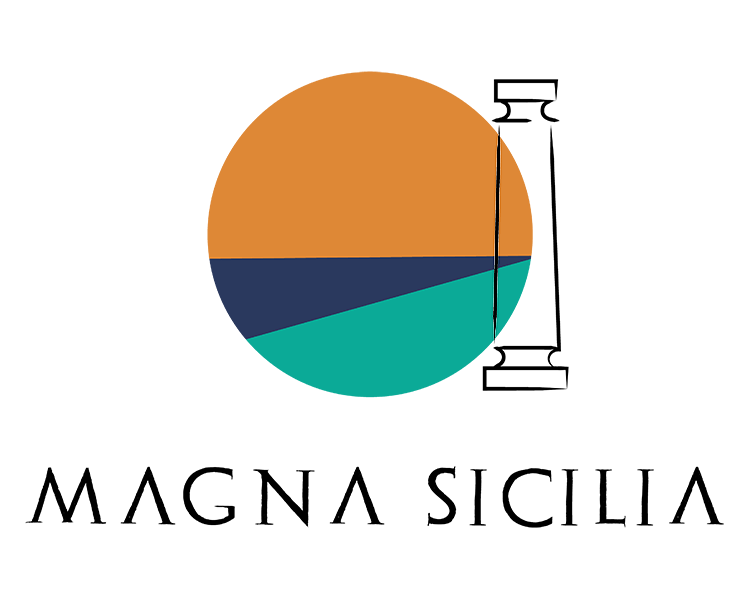
Lampedusa: a stone’s throw from Africa
A magical island, where the beauty of the Western world meets the charm of the African continent. The island of Lampedusa, in Sicilian “mpidusa,” is the southernmost island in all of Sicily. It forms, along with Linosa and Lampione, the Pelagian archipelago (from the Greek Pelàghia, “islands of the high seas”). Walkable entirely in a single day, Lampedusa is the perfect destination for those who love hiking, crystal clear water and wild nature.
An island in the heart of the Mediterranean
Lampedusa is the largest of the Pelagie Islands. It is limestone and dolomite in nature, and although it belongs politically to Italian territory (province of Agrigento), geographically speaking it is part of the African continental shelf. It is therefore not surprising that it is only 152 km from the Tunisian coast and 210 km from the Sicilian coast.
Its morphology makes it a magical island, capable of surprising with white rocks with slight yellow ochre streaks, red seabed and shades of blue such as to give the idea of being in some tropical destination.
But it is also for the different scenery it offers on opposite sides of the coasts: to the south it is low and full of inlets, leaving room for some of the most beautiful beaches in Italy; to the north and west, on the other hand, it is high and sheer above the sea, creating an almost tormented environment.
What to visit in Lampedusa
The sea
Lampedusa is the perfect place for those who love sun, sea, hiking and wilderness.
La Rabbit Beach, voted the most beautiful in the world in 2013 and called by Modugno “God’s pool,” is one of the most famous and unmissable destinations. Reached on foot by walking along a beaten earth path, it is nestled in one of the most coveted bays in the Mediterranean and is characterized by the finest sand. È a nature reserve for the presence of beautiful caretta caretta turtles which lay their eggs here.
There opposite, stands the uninhabited islet of the same name, which can be reached by swimming or walking directly to the water. The name of this area comes from an event that occurs very rarely: Rabbit Island reconnects to the beach when a sandy isthmus rises at low tide. In the past, a colony of rabbits managed to reach the islet precisely because of this sandy strip. Once the high tide returned, unable to go back, they were forced to stay there and, finding no predators, they reproduced so much that they left the island with this name.
Reachable only by sea, however, is the Tabaccara, also called the natural swimming pool of Lampedusa for its sea so crystal clear that it gives the impression of seeing the boats suspended over the water. It can also be reached by walking the same path as Rabbit Beach, but then it will not be accessible for swimming.
For those who enjoy hiking e snorkeling instead are perfect Cala Pulcino, which is difficult to reach on foot but suitable for those who want to experience an even greater thrill after the exertion, and the Dead Sea beach, a rocky cove with a beautiful underwater cave.
There are then Guitgia beach, the most convenient both because of its proximity to numerous hotels and for those seeking equipped beaches and those traveling with children, and Cross Cove (very close to Guitgia beach), characterized by a sea that is always calm thanks to the position that protects it from the wind.
Other stretches of sand not to be missed by those with a long stay on the island are Cala Spugna (or Maluk southernmost point in Italy), Cala Greca, Cala Francese, Cala Madonna e Cala Galera.
Excursions
Countless excursions can be taken on the island. For lovers of hiking and contact with nature, the Forestry Oriented Nature Reserve is full of more or less inland trails of varying difficulty that allow you to appreciate the Mediterranean bush in all its forms. One of the most famous is the one that crosses the Valley of the Scissor and ends with a wonderful view of the bay of Cala Pulcino.
Lampedusa also offers the possibility of making boat excursions in search of dolphins and turtles or to participate in fishing trips with fishermen, who make themselves available to share their passion.
In addition, for those who want to experience the sea at 360 degrees, you can then do diving To discover the enchanting seabed. In this case, crucial is the discovery of the Merlo’s Underwater Madonna: this is a bronze statue located at a depth of 15 meters, donated by photographer Roberto Merlo, who was rescued by Lampedusians after falling ill during a dive.
Between history and art
As a land on the border between two worlds, Lampedusa carries with it a long history of hospitality evidenced by several museums present on the island. These include the New Hope Memorial, a symbol of the 368 migrants who died in the October 3, 2013 shipwreck, and the Pelagie Islands Museum, which houses the
Museum of Dialogue and Trust for the Mediterranean, and which aims to explain migration phenomena using artistic language.
The island itself then is sprinkled with art.: numerous are the murals, statues and tributes dedicated to fishermen.
Work not to be missed is Door of Europe: a door made of refractory ceramic and galvanized iron and donated by painter Mimmo Paladino in 2008. At 5 meters high and 3 meters wide, it symbolizes, for those arriving from Africa, the entry into a new life after a long sea voyage and the opening to new opportunities and hopes. For those who come instead to view it from the island, it symbolizes the geographical end of Italy and a point of connection between the two continents, so ideally distant, yet so equally close.
How to get to the island
The island of Lampedusa can be reached in several ways:
- by plane: from May to October, as air flows intensify,
with direct flights
lasting about an hour, from major airports in Italian cities (Milan, Rome, Bergamo, Parma, Bologna, Pisa, Palermo and Catania); - by ferry: from Porto Empedocle or Agrigento, traveling between 4 and 8 hours depending on the
company
.
Once reached, one moves easily on foot and by public transportation with the two bus lines
(with the Red Circular and the Blue Circular running from about 8 a.m. to 9 p.m.). The ticket costs 1€. Given the time restrictions on vehicles, it is also possible to rent cars or mopeds directly on the island (which we recommend for convenience).
In short, Lampedusa may hold many surprises and is worth getting to know both for its strategic location, which makes it known as a land of landings, and for its wonderful sea and breathtaking landscapes.
by Beatrice Saura





